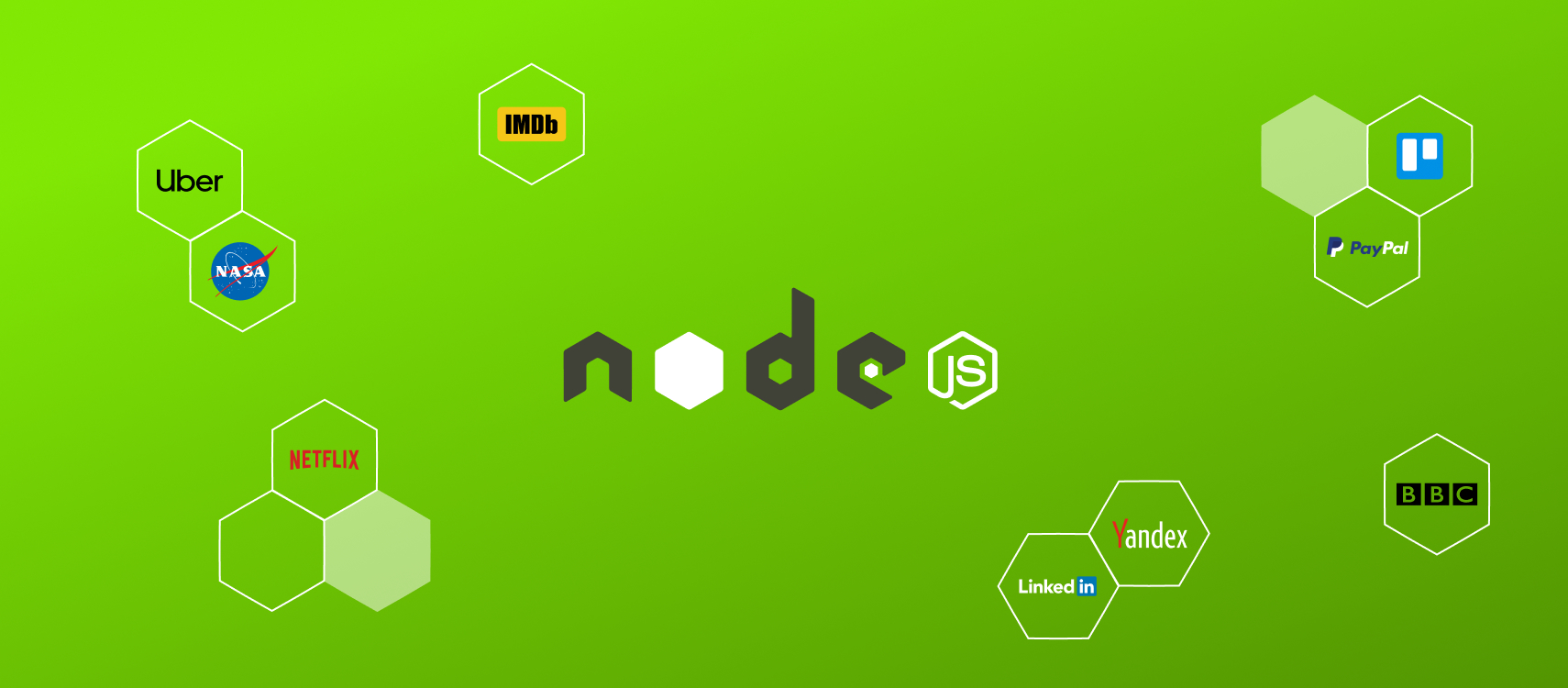Table of Contents
- Node.js Architecture
- Real-Time Node.js
- Scalability Champion
- Ecosystem of Libraries and Tools
- Node.js Capabilities
- Takeaway Notes
In the rapidly evolving landscape of enterprise application development, the demand for real-time capabilities has surged exponentially. From collaborative tools and data streaming platforms to chat applications and IoT systems, the need for highly responsive and scalable solutions is paramount. In this context, Node.js has emerged as a powerful and ideal technology for developing demanding enterprise app projects that require real-time capabilities.
In this article, we will delve into the reasons why hiring a NodeJS development company is an excellent choice for such demanding and challenging projects.
Node.js Architecture
Many businesses hire dedicated NodeJS developers simply because it is built on the V8 JavaScript engine, which is renowned for its exceptional performance and efficiency. Unlike traditional server-side technologies that rely on multi-threading, Node.js utilizes a single-threaded, event-driven architecture. This architecture allows Node.js to handle a large number of concurrent connections efficiently, making it well-suited for demanding enterprise app projects needing real-time capabilities.
The event-driven nature of Node.js means that it can process multiple I/O operations asynchronously. When a request is made, instead of waiting for it to complete before moving on to the next request, Node.js delegates the task to the event loop and continues processing subsequent requests. This non-blocking I/O model ensures that the server remains highly responsive even when handling numerous simultaneous requests. As a result, Node.js excels in scenarios where real-time responsiveness and scalability are essential.
Furthermore, Node.js enables developers to write both client-side and server-side code in JavaScript, providing a unified language for full-stack development. This simplifies the development process and facilitates code sharing between the client and server, resulting in improved productivity and faster time-to-market.
Revisiting Real-Time Capabilities of NodeJS
Real-time applications necessitate seamless communication between the server and clients, enabling instant data updates and notifications. Node.js, with its event-driven nature, excels in building real-time capabilities. One of the key technologies used by NodeJS developers for real-time in-app communication is WebSockets.
WebSockets are a communication protocol that provides full-duplex communication channels over a single TCP connection. This means that both the client and server can send and receive data simultaneously, allowing for real-time bidirectional data transfer. Unlike traditional HTTP requests, which are stateless and require a new connection for each request, WebSockets maintain a persistent connection, enabling instantaneous updates without the overhead of connection establishment.
Node.js frameworks, such as Socket.IO, build on top of WebSockets and provide additional features for real-time communication. Socket.IO simplifies WebSocket implementation and abstracts the underlying transport protocol, allowing developers to work with a consistent API across different browsers and devices. It also offers features like room-based communication and event-driven messaging, making it easier to develop complex real-time applications with ease.
NodeJS Stands Out for Scalability
Scalability is a critical requirement for demanding enterprise app projects, as they often need to handle a rapidly growing user base and increasing workloads. Node.js’s architecture inherently supports scalability through its non-blocking, event-driven model.
Since Node.js can handle a large number of concurrent connections efficiently, it enables horizontal scalability by distributing the workload across multiple instances or servers. By leveraging load balancing techniques, such as round-robin or sticky sessions, Node.js applications can be easily scaled to accommodate higher traffic demands.
Moreover, Node.js has a rich ecosystem of modules and tools specifically designed for scalability. For example, the cluster module allows for easy creation of child processes, each running on a separate core of a multi-core CPU. This enables Node.js applications to fully utilize the available hardware resources and scale effectively.
Additionally, Node.js integrates well with containerization technologies like Docker and orchestration tools like Kubernetes. By packaging Node.js applications into containers, organizations can achieve portability, scalability, and deployment flexibility, empowering them to scale their enterprise app projects effortlessly.
Ecosystem of Libraries and Tools
Node.js benefits from a vast ecosystem of libraries and tools that further enhance its suitability for demanding enterprise app projects needing real-time capabilities. The npm (Node Package Manager) repository hosts thousands of open-source packages, offering solutions for various use cases.
For real-time communication, apart from Socket.IO, libraries like SockJS and Primus provide alternative implementations of WebSockets and offer additional features. These libraries provide flexibility and allow developers to choose the best fit for their specific project requirements.
Moreover, Node.js provides robust support for data streaming and processing. Libraries like Streams, RxJS, and Highland.js enable efficient handling of large data sets and real-time data processing. These libraries facilitate tasks such as real-time analytics, data transformation, and data synchronization, enhancing the capabilities of enterprise app projects.
Furthermore, Node.js integrates seamlessly with popular databases, such as MongoDB, Redis, and PostgreSQL, providing efficient data storage and retrieval for real-time applications. These databases offer support for event-driven architectures and provide features like pub/sub messaging and real-time data synchronization, essential for real-time enterprise applications.
Still Not Convinced About Node.js Capabilities? Here’s Some Eye-popping Examples!
Node.js’s highly scalable real-time capabilities have proven to be a game-changer in too many demanding enterprise app projects. Here we shed light on some of them.
Collaborative Tools:
Collaboration platforms, such as Trello and Asana, rely on real-time capabilities to facilitate seamless teamwork. Node.js’s event-driven architecture and WebSocket support enable instant updates, allowing team members to see changes in real-time, collaborate efficiently, and track project progress effectively.
Data Streaming Platforms:
Streaming platforms, like Netflix and Spotify, require real-time delivery of media content to millions of users simultaneously. Node.js’s scalability, combined with its ability to handle concurrent connections efficiently, makes it an excellent choice for building such demanding enterprise apps. The event-driven nature of Node.js allows for seamless streaming and real-time content synchronisation.
Chat Applications:
Real-time chat applications, such as Slack and WhatsApp, heavily rely on instant message delivery and real-time notifications. Node.js’s WebSocket support, coupled with its non-blocking I/O model, enables bidirectional communication and real-time updates between users. These capabilities make Node.js well-suited for building high-performance chat applications.
Internet of Things (IoT) Systems:
IoT systems often require real-time communication between devices and data processing servers. Node.js’s lightweight architecture and event-driven nature enable efficient handling of real-time sensor data, enabling enterprises to build scalable IoT platforms. Node.js’s ability to handle multiple concurrent connections and its support for protocols like MQTT make it an ideal choice for IoT projects.
Financial Applications:
Real-time financial applications, including trading platforms and payment gateways, demand instant data updates and high-performance transaction processing. Node.js’s event-driven architecture, combined with its ability to handle concurrent connections, ensures real-time data synchronisation and responsiveness, making it a suitable technology for building demanding financial applications.
Live Dashboards and Analytics:
Enterprises often require real-time data visualisation and analytics dashboards to monitor key metrics and make data-driven decisions. Node.js, with its ability to handle streaming data and real-time updates, enables the creation of dynamic and interactive dashboards. Libraries like D3.js and Chart.js further enhance Node.js’s capabilities for data visualisation.
Takeaway Notes
Node.js has emerged as an ideal choice for demanding enterprise app projects needing real-time capabilities. Its single-threaded, event-driven architecture, combined with the use of WebSockets and frameworks like Socket.IO, enables seamless real-time communication between the server and clients.
By leveraging Node.js, organisations can develop highly responsive, scalable, and efficient real-time applications, enhancing their ability to deliver superior experiences to their users and bring more traction to their enterprise apps.










